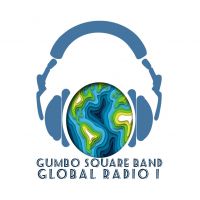World music is a broad and vibrant genre that encompasses a wide array of musical styles from various cultures around the globe. It emerged in the late 20th century as a way to categorize non-Western music that did not fit neatly into traditional Western genres like rock, pop, or jazz. The term "world music" was coined by journalist Roger Armstrong and record store owner Ben Mandelson in the mid-1980s as a marketing tool to promote music from different parts of the world.
The genre spans an incredibly diverse range of sounds, instruments, and vocal styles, reflecting the rich cultural heritage of each region. From the rhythmic beats of African drumming to the melodic intricacies of Indian classical music, world music offers a sonic journey that transcends geographical boundaries. It includes traditional folk music, contemporary fusion, and experimental compositions that blend elements from multiple cultures.
One of the defining characteristics of world music is its emphasis on authenticity and cultural preservation. Many artists within this genre strive to maintain the integrity of their musical traditions while also innovating and adapting them for modern audiences. This balance between tradition and innovation is what makes world music so dynamic and appealing.
African music, for example, is known for its polyrhythmic patterns and call-and-response vocals, which can be heard in genres like Afrobeat, Afro-fusion, and Highlife. Instruments such as the djembe, kora, and balafon are integral to these styles, creating complex layers of sound that are both energetic and deeply rooted in cultural history.
In Asia, world music encompasses a vast array of traditions, from the classical ragas of India to the pentatonic scales of Chinese folk music. Japanese taiko drumming, with its powerful and precise rhythms, is another notable example. The use of traditional instruments like the sitar, tabla, and erhu adds depth and authenticity to these musical expressions.
Latin American world music is equally diverse, featuring genres like tango from Argentina, salsa from Cuba, and bossa nova from Brazil. These styles often incorporate elements of African rhythms and European melodies, creating a unique fusion that reflects the region's rich cultural mix. Instruments such as the bandoneón, congas, and berimbau are essential to these genres.
In Europe, world music includes traditional folk styles from countries like Ireland, Spain, and Greece. Irish folk music, with its lively fiddles and bodhráns, is a prime example. Flamenco from Spain combines passionate vocals, intricate guitar playing, and expressive dance. Greek bouzouki music features the distinctive sound of the bouzouki, an eight-stringed instrument that produces a rich, resonant tone.
The Middle East contributes to world music with genres like Arabic classical music, which features complex melodies and microtonal scales. Instruments such as the oud, qanun, and ney are central to these styles, creating a sound that is both ancient and timeless.
World music also encompasses contemporary fusion styles that blend traditional elements with modern production techniques. Artists like Fela Kuti, who pioneered Afrobeat, and Buena Vista Social Club, which revitalized Cuban son music, have had a significant impact on the genre. These artists demonstrate how world music can evolve while staying true to its cultural roots.
The global reach of world music is further enhanced by festivals, concerts, and collaborations that bring together musicians from different parts of the world. Events like WOMEX (World Music Expo) and the Rainforest World Music Festival provide platforms for artists to showcase their talents and connect with audiences worldwide. These gatherings foster a sense of community and cultural exchange, highlighting the universal language of music.
In conclusion, world music is a rich tapestry of sounds that celebrates the diversity and beauty of global musical traditions. It offers listeners a chance to explore new cultures, appreciate different artistic expressions, and experience the power of music to connect people across borders. Whether through traditional folk styles or contemporary fusions, world music continues to inspire and enchant audiences with its unique blend of authenticity and innovation.
 CeriaFMCeriaFM
CeriaFMCeriaFM 7.2k
7.2k
 1
Malaysia, Dungun World music 64 kbps AAC (LC)
1
Malaysia, Dungun World music 64 kbps AAC (LC) 2.1k
United States, Miami World music 128 kbps MP3
2.1k
United States, Miami World music 128 kbps MP3 Denmark World music 192 kbps MP3
Denmark World music 192 kbps MP3






































